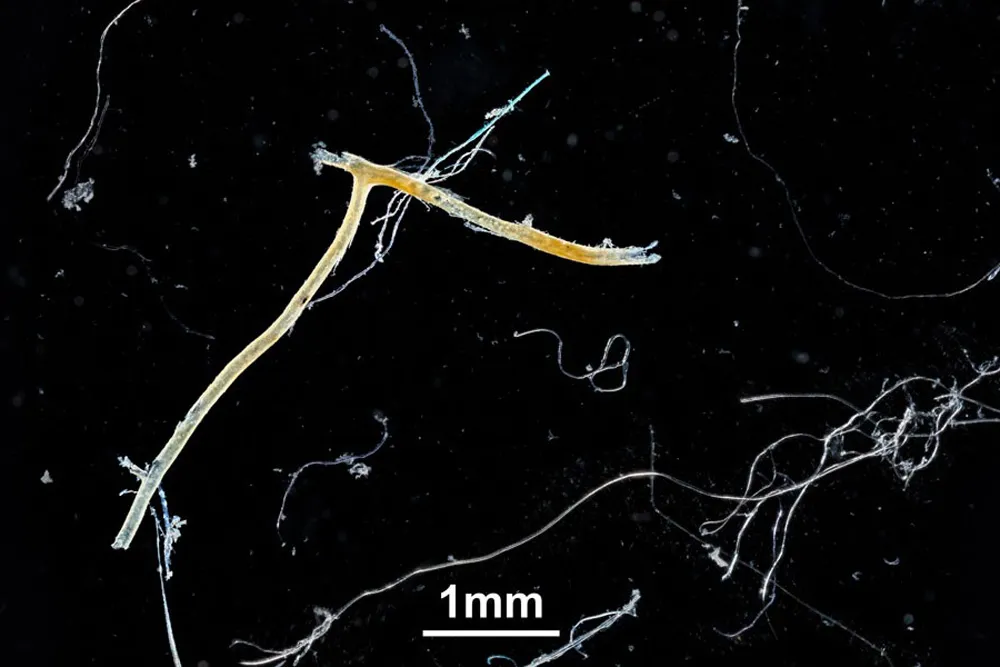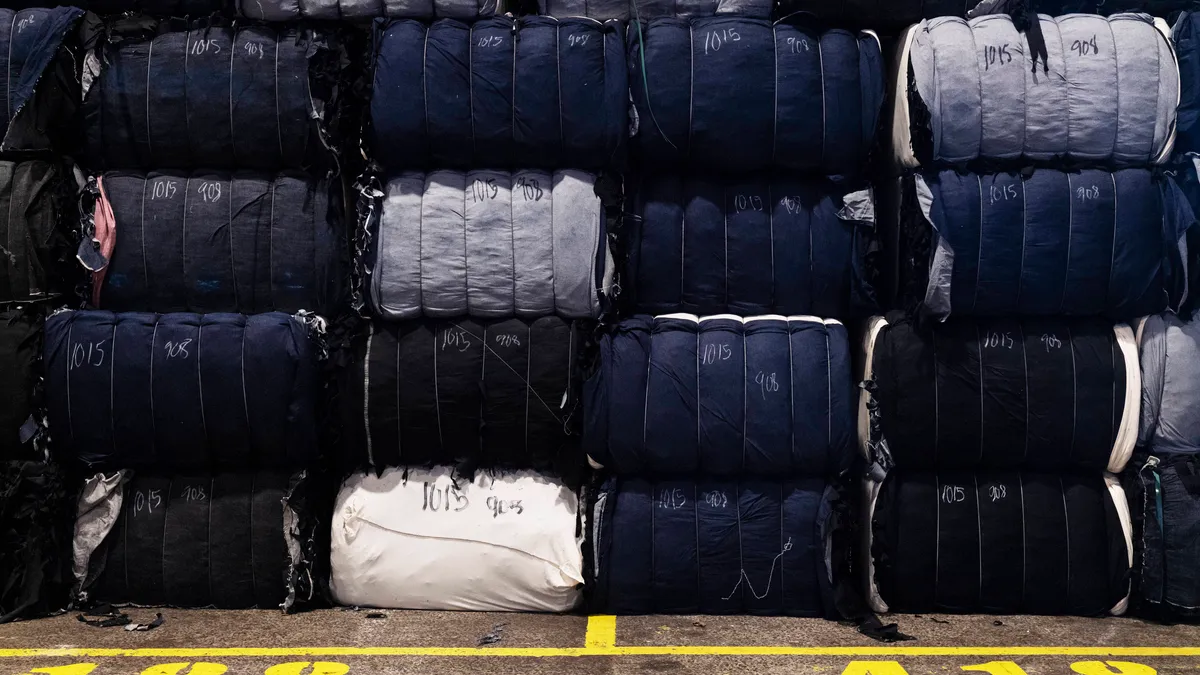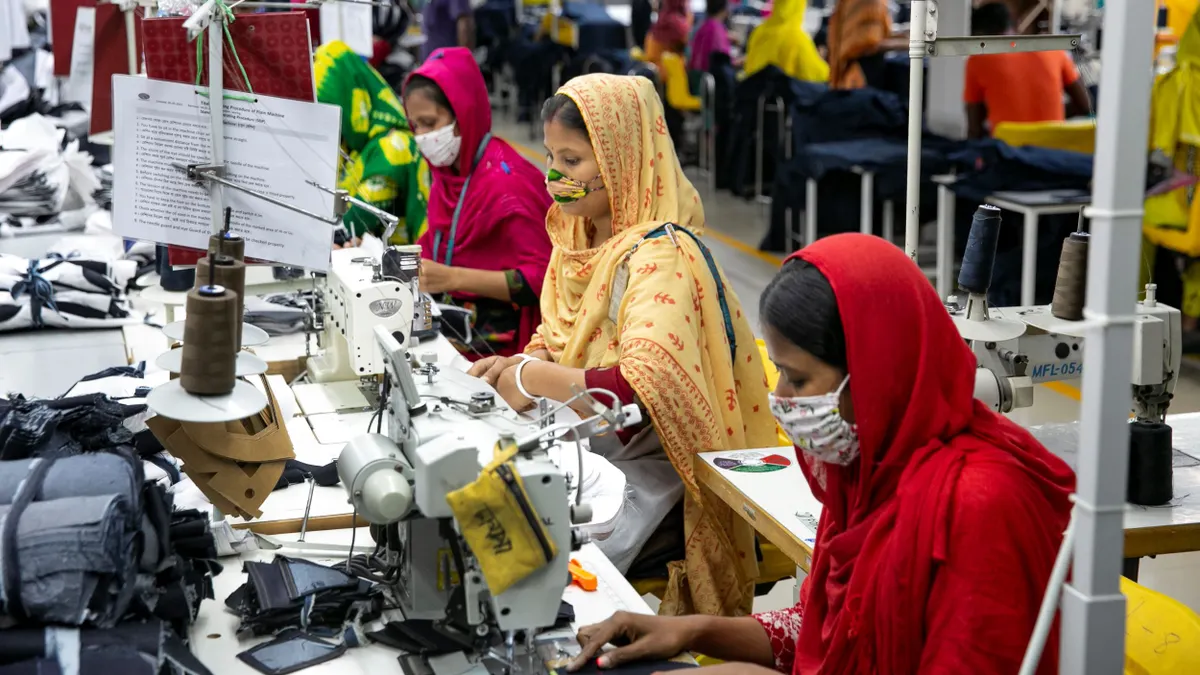When deadly floods washed over Pakistan last summer and displaced around 30 million people, the country’s vast cotton fields were left drenched. The government of the country, which is the world’s fifth largest cotton producer, estimated that around 40% of the crop’s annual production was affected or destroyed because of the flooding.
Climate change likely drove the record-breaking rain that caused the flooding, underscoring just one of the many ways changing weather patterns will likely impact the fashion and apparel industry. Brands may have to grapple with cotton yields that don’t keep up with demand.
“People are used to having these commodities available to them at all times,” said Hannah Cuneen, a principal program manager at Forum for the Future, whose Cotton 2040 initiative focuses on creating a resilient industry. “They don’t think that there’s ever going to be a lack of resistance or research and development that can pull them out of climate issues with cotton, when in fact, that’s not the case at all.”
But the fashion industry isn’t just impacted by the world’s changing climate. It also majorly contributes to global warming, with a 2020 report from McKinsey and Co. saying estimates point to the industry contributing up to 10% of global greenhouse gas emissions.
Though apparel companies like H&M Group and Nike often focus on initiatives like reducing packaging waste and making their retail stores more environmentally friendly, these factors make up just a small sliver of the industry’s overall climate footprint.

Where are the fashion industry’s fossil fuels?
Fossil fuels are linked to every part of the fashion industry’s supply chain, from the fertilizer used to grow crops like cotton to the gas used to power vehicles shipping online orders to customers. Fossil fuels also keep the factories used to manufacture apparel running. And they even make up the garments themselves, with polyester — which is derived from petroleum — being the most commonly used textile.
It’s unclear what the fashion industry’s exact impact on climate change is, as reports on the matter often have to make assumptions for critical data, like how much polyester is manufactured in China. A complex supply chain likely contributes to these issues. Moreover, few apparel brands are making their climate impact information public.
“Who’s going to invest in, like, tracking the footprint of that poly-cotton blend that came from God knows where?” said Kimberly Guthrie, a fashion design and merchandising professor at Virginia Commonwealth University. “This fashion system is probably the most complicated product development system I’ve ever encountered.”
At least two sets of researchers have recently sought to estimate the fashion industry’s annual greenhouse gas emissions. The most recent, a 2021 working paper from the World Resources Institute and the Apparel Impact Institute, estimated the sector’s emissions totaled around 1 gigaton of greenhouse gas emissions, representing about 2% of the world’s annual output. However, an earlier report released in 2020 from McKinsey estimated that number was about twice as high, at 2.1 gigatons, or 4% of annual emissions.
Each report noted that not enough data exists to precisely estimate the fashion industry’s climate impact.
For instance, the McKinsey report said its calculations didn’t account for emissions related to fashion shows or the back-office activities of individual fashion companies. Moreover, its calculations showed that the industry’s emissions ranged anywhere from 3% to 10% of the world’s total annual output depending on which assumptions researchers made during their analysis.
However, each report showed that the activities to produce apparel — like making polyester, growing cotton and manufacturing fabrics in factories — are one of the biggest contributors to the industry’s emissions. In comparison, brand operations, which include selecting packaging and running retail stores, are a much smaller contributor, the McKinsey report showed.
For instance, producing materials like cotton and polyester accounted for a whopping 38% of the fashion industry’s greenhouse gas emissions in 2018, the report found. Meanwhile, transport and retail together only accounted for 6% of annual emissions.
Upstream production made up over two-thirds of the fashion industry's carbon emissions
Both reports suggest fashion companies should invest in renewable energy and incentivize suppliers to make the shift away from powering their factories with fossil fuels. For instance, brands could strike longer-term contracts with manufacturers so they know they will have the revenue needed to make large investments in renewable energy sources.
Making these kinds of improvements would have the biggest impact on helping the fashion industry curb its emissions in order to keep the planet from warming more than 1.5-degrees Celsius, according to the McKinsey report. That target was set in 2015 by nearly 200 nations that signed the landmark Paris Agreement, which is meant to avert catastrophic climate change.
The World Resources Institute estimated that extracting raw materials — such as making polyester and growing cotton — contribute about one-quarter of the fashion industry’s annual emissions. Its researchers recommended the fashion industry opt for more sustainable materials, though what falls under that category is hotly contested.
Recycled polyester has been touted as a green alternative, but some research has suggested that it may leak more microplastics into water when washed than virgin polyester. And while growing organic cotton produces only about half of the emissions that it takes to grow traditional cotton, it’s been difficult to scale production.
Organic cotton accounted for only about 1% of fibers produced worldwide in 2021, according to a recent report from Textile Exchange.
“Why are people always putting organic cotton at the top of the list of sustainable fabrics?” Guthrie said. “It’s 1% of the whole fiber market. We can’t solve the world’s problems with organic cotton.”
For now, polyester is king, accounting for 54% of fibers produced worldwide. And the fashion industry has been hesitant to break up with the material due to its low price and availability.
“It’s so cheap,” Guthrie said.
Are consumers to blame?
A garment doesn’t stop contributing to greenhouse gas emissions once a customer leaves a store. The McKinsey report estimates that around 20% of the fashion industry’s annual emissions come from product use, such as washing and drying items.
If consumers changed their behaviors — such as washing clothes less frequently, using cold water, and occasionally substituting dryer usage with open-air drying — it could reduce annual emissions by about 186 million tons, or nearly 9% of the fashion industry’s annual emissions. They suggest brands and retailers make more of an effort to teach their consumers about how to care for their items.
However, brands should also ensure they aren’t burdening consumers with hard-to-care-for garments, said Tasha Lewis, a human sciences professor at Ohio State University who studies how environmental issues influence the fashion industry.
“You make something easy for me to wash in cold water, something that I don’t have to dry on high heat for a long period,” Lewis said, suggesting these types of factors make sustainable practices more accessible for consumers.
Even if the brands and consumers make serious changes, the fashion industry will still struggle to reduce its climate footprint without addressing what the World Resources Institute called “the elephant in the room” — consumption. The World Economic Forum estimates that around 150 billion clothing items are made each year, and that those items are worn an average of just seven times before they’re thrown away.
“Why are people always putting organic cotton at the top of the list of sustainable fabrics? It’s 1% of the whole fiber market. We can’t solve the world’s problems with organic cotton.”

Kimberly Guthrie
Fashion design and merchandising professor, Virginia Commonwealth University
Extending the life cycle of a garment through resale programs is one strategy to address those issues. More than 120 brands have started programs to take back used garments, usually in exchange for credit or gift cards. They then resell those items or recycle them.
However, these programs aren’t inherently sustainable. Trove, a maker of online recommerce platforms, recently argued that branded resale programs largely amount to marketing programs if they merely incentivize customers who bring back their garments to purchase new items.
Brands with takeback programs can play a larger role in taking responsibility for where garments end up, Lewis said. That includes teaching consumers how to repurpose garments they no longer wear and taking back items they no longer want.
However, brands themselves then become responsible for figuring out where those clothes should go next.
“When you take it back, can you make it into something that’s recycled?” Lewis said. “Not that you just take it back, but that it becomes a part of your supply chain.”



















